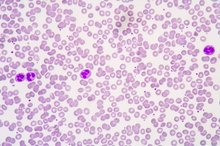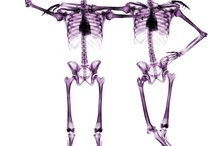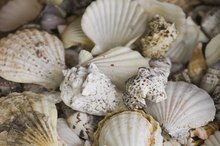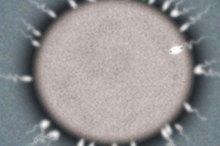Specialized Cells in the Skeletal System
The human skeleton is composed mainly of a substance called bone, and there are primarily four types of cells that make up bone. These are the osteoprogenitor cells, osteoblasts, osteoclasts and osteocytes. Their names all start with the prefix “osteo,“ which is the Greek word for "bone."
Osteoprogenitor Cells
These are immature cells that are primarily located in the bone marrow and periosteum (membrane that lines the surface of all bones). They mature into the osteoblasts, another type of bone cell.
Osteoblast Cells
Different Cells in the Human Body
Learn More
These are the bone cells that are primarily responsible for bone formation. They only have one nucleus and are derived from osteoprogenitor cells. They function by secreting a substance called osteoid, which is also known as the bone matrix. This substance is then mineralized with substances like calcium and phosphate, which forms the substance we know as bone. When a group of osteoblasts is finished forming bone, they flatten out and line the surface of the bone 1. Henceforth they are known as “lining cells,” and their job is to regulate the passage of minerals, such as calcium, in and out of the bone. They also function by secreting proteins that regulate the osteoclast cells.
- These are the bone cells that are primarily responsible for bone formation.
- They function by secreting a substance called osteoid, which is also known as the bone matrix.
Osteoclast Cells
These are the cells that are primarily responsible for dissolving bone tissue, also known as resorption. They do not arise from osteoprogenitor cells; instead, white blood cells that normally have immune system function (monocytes) fuse together to create the osteoclasts. As a result, they are quite large, with multiple nuclei, and are located in the endosteum (membrane that lines the inner cavity of the bone where bone marrow resides).
- These are the cells that are primarily responsible for dissolving bone tissue, also known as resorption.
Osteocytes
Bone Eating Diseases
Learn More
These can be recognized by their typical star-shaped appearance, and are mature osteoblasts that do not secrete the osteoid bone matrix, but are surrounded by it. They have long branches that reach out from the cell body and communicate with neighboring osteocytes, and play an important role in maintaining calcium levels in body fluids. They do this by regulating the process of bone formation and/or resorption; since the bone is the body’s primary reservoir of calcium, they end up controlling the release/storage of calcium in the bloodstream.
Related Articles
References
- “Wheater’s Functional Histology: A Text and Colour Atlas, 5th Edition;” Young; 2006
- “Grainger & Allison’s Diagnostic Radiology, 5th Edition;” Adam; 2008
- American Academy of Orthopedic Surgeons. (n.d.). Paget's Disease. https://orthoinfo.aaos.org/en/diseases--conditions/pagets-disease-of-bone/
- American Academy of Orthopedic Surgeons. (n.d.) Metastatic Bone Disease. https://orthoinfo.aaos.org/en/diseases--conditions/metastatic-bone-disease/
- American College of Rheumatology. (2019). Osteonecrosis. https://www.rheumatology.org/I-Am-A/Patient-Caregiver/Diseases-Conditions/Osteonecrosis
- Ferguson JL, Turner SP. Bone Cancer: Diagnosis and Treatment Principles. Am Fam Physician. 2018 Aug 15;98(4):205-13. https://www.aafp.org/afp/2018/0815/p205.html
- American Academy of Orthopedic Surgeons. (n.d.). Paget's Disease.
- American Academy of Orthopedic Surgeons. (n.d.) Metastatic Bone Disease.
- American College of Rheumatology. (2019). Osteonecrosis.
- Cohen A, Drake MT. (2017). Clinical manifestations, diagnosis, and treatment of osteomalacia. Snyder PJ, ed. UpToDate. Waltham, MA: UpToDate.
- Ferguson JL, Turner SP. Bone Cancer: Diagnosis and Treatment Principles. Am Fam Physician. 2018 Aug 15;98(4):205-13.
Writer Bio
Saad Mohammad, M.D., is currently in the process of applying to residency anesthesiology. His first published research occurred in 2009 at the American Thoracic Society National Conference where a poster presentation was accepted and at the Bridgeport Symposium 2009. He began professionally writing in 2009 for Demand Studios as a freelance writer on issues in health and medicine.









